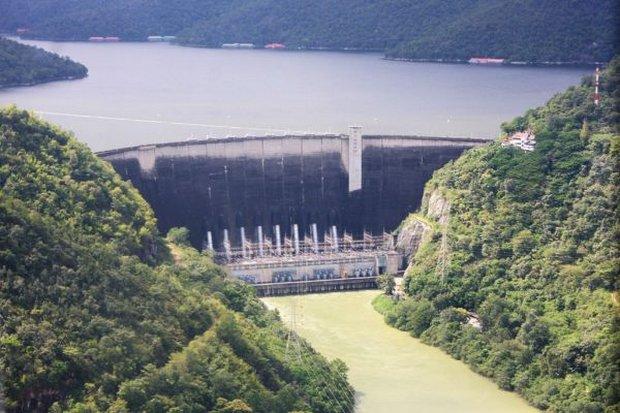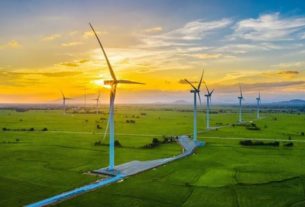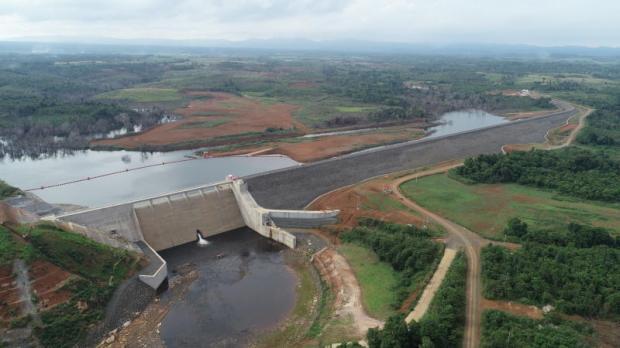
“Cheap” energy fails to take into account the permanent environmental devastation, the social breakdown and the long-term repercussions. (File photo)
The National Energy Policy Council last week approved Thailand’s new Power Development Plan (PDP 2015), which lays out Thailand’s energy and investment plans for the next 21 years.
The plan aims to double Thailand’s installed energy capacity in the next two decades to reach 70,410 megawatts by 2036. The key to much of this growth lies in plans to import significant amounts of electricity from Laos and Myanmar. While these decisions may be driven by political interest and a push for economic growth, the hidden cost of these new energy plans and the implications for Thais and the Mekong Region are alarming.
One of the key concerns from academics and civil society is that the reserve margin, or the available surplus of unused energy, is set at a 15% minimum without a ceiling which far exceeds the country’s real needs. The reserve margin in some years is set as high as 39%.
This leads to a critical question: Why does Thailand need to have so many new power plants – including coal-fired, hydro-electric dams and even nuclear plants – when we are not going to use almost half of the energy available? New power plant projects in Thailand, particularly coal-fired, nuclear and hydropower projects, have faced strong opposition from local communities due to their adverse social and environmental impacts.
Due to stronger laws and regulations as well as growing public awareness in Thailand, the new sources of energy in the PDP 2015 will be through imported electricity from Laos, along with Myanmar and Yunnan province in southwestern China.
In September 2014, imported hydropower accounted for 7% of Thailand’s installed capacity.
This source will increase to 10-15% in the first decade of the plan, and then to 15-20% during the second decade. This includes electricity from the controversial Xayaburi dam on the Mekong River and the Hongsa coal-fired power plant in Laos.
While Thailand is set to move ahead with its plan to ensure abundant supply of “cheap” energy, it glaringly ignores the invisible costs of those proposed power projects.
What is billed as cheap energy is actually very expensive when one takes into account the permanent environmental devastation, the social breakdown and the long-term repercussions on the region and its peoples.
Apart from the Xayaburi dam and Hongsa coal-fired power plant, Thailand is also involved in other hydropower dam construction throughout the region. On the Salween River there are two major projects, the Hat Gyi dam and the Mong Ton dam, (formerly called the Ta Sang dam). Both have devastating environmental and social impacts.
Along the Salween River in Myanmar, ethnic groups in war-torn Karen and Shan states will be severely affected. The Mong Ton dam will create a large reservoir inundating homes and farmlands of 300,000 people who were uprooted from the central Shan state during the massive forced relocation policy by the Myanmar military between 1996-1998.
If the Mong Ton dam is built, permanent refugees, who were swept from their homelands, risk becoming yet another overlooked cost of cheap electricity. It’s time we recognise the transboundary social and environmental impacts of our insatiable thirst for energy on our neighbouring countries. Thailand must begin to consider its extraterritorial obligations when investing in large infrastructure projects abroad.
In the face of state indifference, a group of Thai villagers who will be affected by the Xayaburi dam in Laos are taking their case to the Administrative Court against five government agencies, including Egat, to stop the construction.
Thailand’s energy planning process has long been characterised by persistent over-forecasting of energy demand leading to over-investment and an increased economic burden on consumers. It is also closed process with little transparency or engagement with the public.
In 2012, energy experts Chuenchom Sangasri Greacen and Chris Greacen published an alternative Power Development Plan for Thailand which was presented to the Ministry of Energy and representatives from Egat. The report, which analysed previous energy development plans, found that future power demand was overestimated by 13,200MW and that Thailand could meet its future energy needs without any additional hydropower imports and without additional investments in coal and nuclear power.
With a more accountable, transparent, and participatory energy planning process that incorporates all hidden costs, we will not need to destroy the Mekong and the Salween, the region’s pristine rivers, and the livelihoods of peoples who depend on them.
There are energy options to replace destructive hydropower dams and coal-fired power plants. Our rivers, however, are irreplaceable.
Source: http://www.bangkokpost.com/opinion/opinion/565867/the-hidden-cost-of-thailand-electricity


